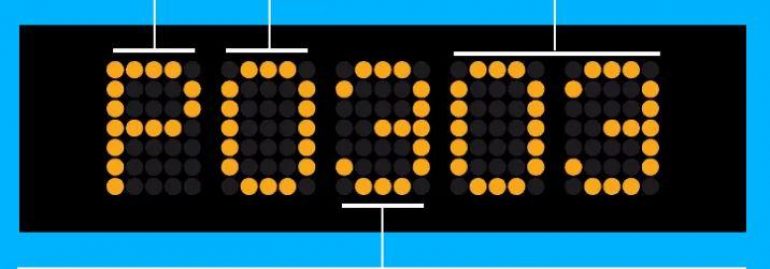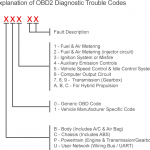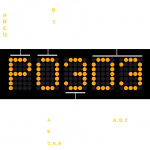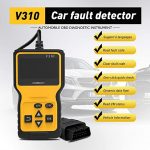The first step to solving the problem of a car with a diagnostic code is to locate the malfunctioning system. An OBD system will produce a code, which is a combination of numbers and letters. With modern vehicles, the codes can have hundreds of different combinations. Here’s how to find and interpret the code that appears on your vehicle’s dashboard. This article will also explain what the code P0300 means. In addition, we’ll go over some of the most common causes of this trouble code.
P0300 code
A P0300 diagnostic code for cars is the result of a misfire. It is the result of incomplete combustion. If this occurs, the engine will move irregularly, which can lead to a variety of problems. Some of these issues can be easily solved by replacing the spark plugs and ignition coils. However, many other problems may be more difficult to identify and fix. If you are having trouble with this code, it is worth contacting a mechanic.
One of the most common causes of the P0300 code is a faulty spark plug. This spark plug will give off the error code, but it can also be caused by a faulty ignition coil or a defective cable. If this is the case, replacing all the spark plugs in your car will eliminate the problem. A mechanic can also diagnose the cause of the code by moving the ignition coils to isolate the problem.
There are many causes of misfires in cars. Those that are caused by the improper timing of the ignition will cause the P0300 code to be displayed on the dashboard. When the engine misfires, it can lead to costly damage to the engine and the catalytic converter. To prevent costly damages, it is recommended to repair the problem as soon as possible. However, you must be sure to contact a mechanic if you discover this problem on your own.
Misfires can occur in any cylinder of a car’s engine. When this happens, the engine will suffer from a speed fluctuation, and its performance will deteriorate. This code can also be caused by the crankshaft position sensor. Misfires can affect the engine’s fuel-air mixture, which can lead to the malfunction of the catalytic converter. Fortunately, there are many things that can cause a misfire, so it is vital to know what to look for if you have this code on your car.
An intermittent misfire is a frustrating problem, and it can lead to your vehicle failing an emissions test. The P0300 trouble code for cars indicates that there are misfires in multiple cylinders. This indicates that the fuel/air mixture is not burning properly. The engine needs fuel, air, and spark for proper operation. Advance Auto Parts offers free code scanning for cars. If your car is exhibiting this trouble, it is time to schedule a vehicle service at a mechanic’s shop.
There are many different causes of a P0300 code for cars. First of all, it means that you need to check the ignition coil connectors. Also, you need to replace worn or old spark plug wires. Another cause is misfueling. It is important to make sure your car has enough fuel. In some cases, the misfire may be caused by a malfunctioning oxygen sensor. If you suspect this, you need to repair the wiring before attempting to solve the misfire.
When a car experiences a misfire, it may be a misfire in more than one cylinder. This can cause poor power output and increased fuel consumption. In addition to fuel consumption, a misfire can cause the catalytic converter to melt. This damage can lead to dangerous operating conditions for your car. If you have this code in your car, it is a good idea to have it diagnosed by a licensed mechanic.
A P0300 error code means that there is an issue with your engine. This code is a result of a misfire in more than one cylinder. The problem could be caused by an irregular fuel mixture, compression, or ignition. Once you’ve found the issue, you should be able to fix the misfire. If you see a code like P0300, you should contact your mechanic and get it fixed as soon as possible.
P0106 code
If you’re looking for a car repair shop that can diagnose the MAP Sensor and fix the MAP sensor malfunction, you may need to look at the P0106 diagnostic code for cars. This code appears when the ECU detects a change in voltage on the MAP Sensor. If the problem is not resolved, it can cause other problems. This code may also indicate that a sensor in your car has gone bad, which can result in a malfunction of the engine’s performance.
A faulty sensor or manifold can cause the P0106 car error code. The problem can be very costly, causing your car to have erratic acceleration and poor performance. This trouble code may even put you and your passengers at risk. Fortunately, the process to fix this code is easy and inexpensive, and it’s also relatively simple to fix. However, some cars may have unique layouts that make accessing the sensors more difficult than others.
If you’re unable to find the source of the P0106 diagnostic code for cars, you may have to replace the MAP sensor. This is the last option, and it’s important to note that if it doesn’t fix the problem, you may need to replace the MAP sensor. Make sure that the new MAP sensor is working correctly before you attempt any other car repairs. A good way to verify that the code is resolved is to test drive your car.
The P0106 error code is related to the manifold absolute pressure sensor (MAP). Most cars have a faulty MAP sensor, and it can be a major cause of drivability issues. In fact, it can even result in an engine backfire. To resolve the problem, you should contact a car repair shop as soon as possible. You should also consider replacing the MAP sensor if you notice any other symptom of a malfunction.
Before you can diagnose the P0106 code for cars, you need to make sure the air intake is regulated properly. If you notice any visible damage or restricted airflow, this is probably the source of the problem. If the problem is not the sensor itself, you may need to check the air filter. The air filter is also the cause of P0106. It should be replaced if needed. You can also use an OBD-II scan tool to diagnose the problem yourself.
If the problem isn’t the engine’s fuel pump, try to repair it yourself. You can try using an OBD-II scanner to check the code, reset the fault codes, and even do a road test on your car. By following these simple steps, you should have no trouble with the P0106 diagnosis. If all else fails, contact a qualified mechanic to fix the problem. They may be able to fix the problem themselves.
The most common cause for this car error code is the MAP sensor. This sensor measures the pressure inside the engine’s intake manifold. Absolute pressure directly correlates with the engine’s load, so a faulty MAP sensor can cause a variety of symptoms, such as low power, a rough idle, and too high or low idle speed. A diagnosis of MAP sensor failure may include replacing the sensor with a replacement part.
To fix MAP sensor problem, you need to check MAP sensor. You can find it on the intake manifold and firewall of your car. It may also be underneath the fenders or near wheel arches. If the problem persists, it’s time to replace the sensor. And you can do this yourself with some simple tips. But if you’re not sure, try looking for a professional mechanic.






